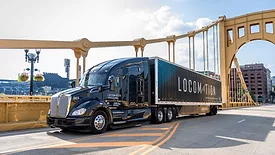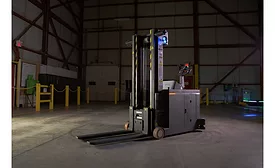Home » Keywords: » autonomous vehicles
Items Tagged with 'autonomous vehicles'
ARTICLES
DoorDash Labs develop Dot, a commercial autonomous delivery robot
Read More
Distribution
Vehicle technology trends are reinventing tire solutions for beverage fleets
Tire manufacturers turn to smart technology, accommodate EV needs
January 31, 2024
Distribution
The present and future of AI in beverage delivery
Investments by truck manufacturers teases autonomous’ potential
January 2, 2024
Distribution
The road ahead for autonomous delivery trucks
Investments by truck manufacturers teases autonomous’ potential
October 4, 2023
Distribution
Autonomous vehicles fleets are the future, and the future is getting closer
Autonomous food, beverage delivery will be among the fastest growing sectors, second only to retail, report shows
September 30, 2022
Warehouse
Automated guided vehicles benefits expand during pandemic
Advancements help AGVs operate more efficiently, safely in beverage warehouses
August 5, 2020
Distribution
Autonomous vehicle technology companies ramp up development for fleets
Self-driving truck market expected to grow 10% CAGR through 2025
May 5, 2020
AGVs maximize production, ROI for warehouses
Suppliers introduce new AGVs to beverage market
August 23, 2019
Elevate your expertise in the beverage marketplace with unparalleled insights and connections.
Join thousands of beverage professionals today. Shouldn’t you know what they know?
JOIN NOW!Copyright ©2026. All Rights Reserved BNP Media.
Design, CMS, Hosting & Web Development :: ePublishing











